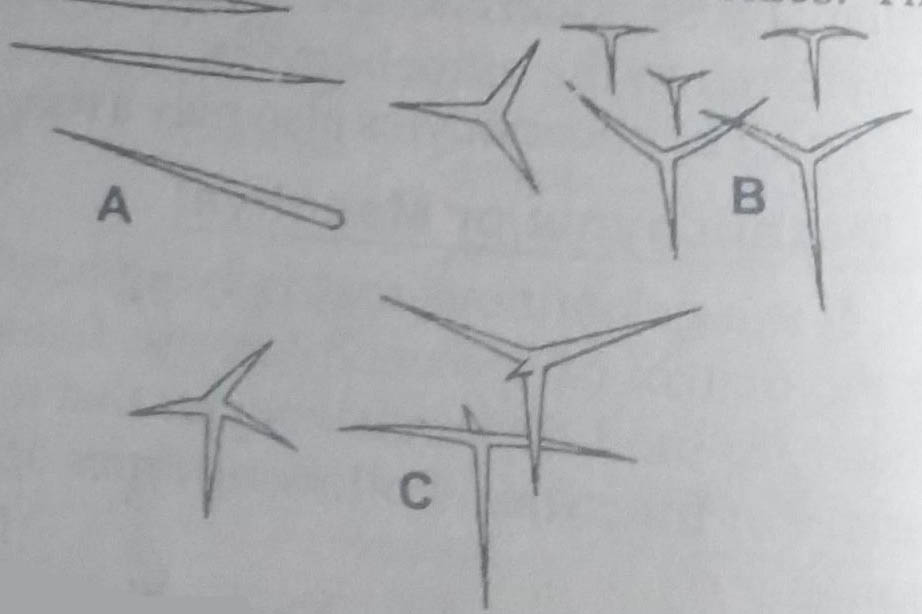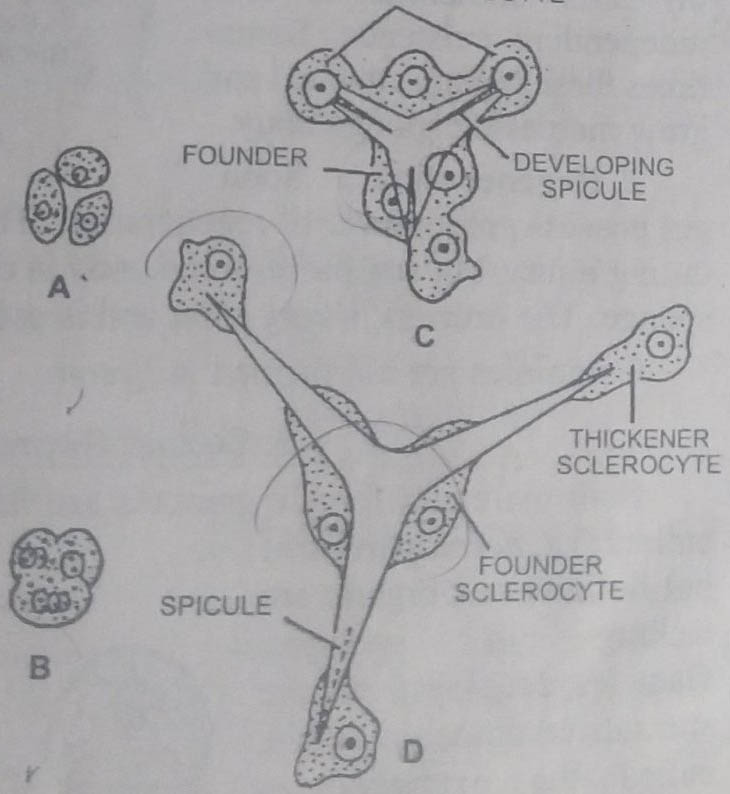Q.5. Give an account of the skeleton in Sycon and describe the development of spicules.
Describe different types of cells found in the body of sycon.
Ans.5. The soft body of calcareous sponges is supported by an endoskeleton made of a large number of minute, crystalline spicules. Calcareous spicules are megascleres, i.e., they are large. They are of various shapes and sizes. The spicules are mainly located in the mesohyal and are often projected out through the pinacoderm.
Types of Spicules in Scypha
Spicules in Scypha or Sycon are of following types :

1. Monaxon spicules : These are large, needle-like and straight or may be curved. These may be (i) monactinal in which growth takes place in one direction only and (ii) diactinal in which growth occurs in both directions.These may be of the following types:
(a) Large one-rayed monaxon spicules found around the osculum and are arranged in a circlet.
(b) Small, simple, spear- like or club- shaped found projecting out from it in dense masses, giving it a bristly appearance.
2. Tetraxon: These are also known as tetraradiates. Each consists of four rays or axes but in different planes. These occur surrounding thespongocoel.
3. Triaxon spicules: These are triradiate spicules consisting of three axes. These occur along the radial canals. Their one end points towards the closed end of the canals.
Development of Spicules

Spicules develop by the secretion of special amoeboid cells, the scleroblasts, located in the mesohyal of the sponge body. A monaxon spicule is formed by two sclerocytes produced by the division of a single scleroblast. Outer sclerocyte is called the thickener cell and the inner one as founder cell. Thickener cell is responsible for the lengthening of the spicule.
A triradiate spicule is formed by a group of three scleroblasts. Each of these gets divided into two sclerocytes forming a sextet, i.e., six cells. The tetraradiate spicule develops like a triradiate spicule, the fourth ray developing from junction of the three.
Importance of Spicules
1. These provide a supporting framework and stiffness to the sponges.
2. These are protective in function.
3. These are of variety of shapes and help in the identification of different species of sponges.
BSc 1st Year Lower Non-chordates Sycon Sample Model Practice Question Answer Papers